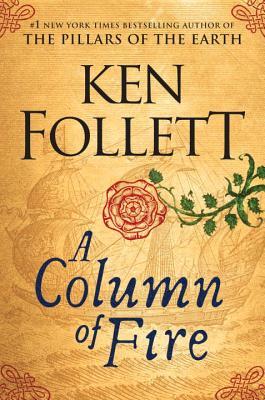 In 2007, I was the young mother of a one and four-year-old. I wrote a column for our city paper, and I had just started running long distances to eventually run a half marathon. I was 29 years old, and I relied on Oprah’s Book Club recommendations in between the release of Harry Potter books and films.
In 2007, I was the young mother of a one and four-year-old. I wrote a column for our city paper, and I had just started running long distances to eventually run a half marathon. I was 29 years old, and I relied on Oprah’s Book Club recommendations in between the release of Harry Potter books and films.
It was in 2007 that I saw her enthusiasm for Ken Follett’s Pillars of the Earth and wondered, “Do I really want to read a 900-page book about the building of a cathedral in the Middle Ages? Seriously, Oprah. That’s a lot to ask.”
Oprah’s Book Club selections had never failed me. It was how I came to love Wally Lamb and Barbara Kingsolver. It was how I found The Rapture of Canaan and Middlesex and Midwives. It was pre-social media, pre-Google, pre-GoodReads. If Oprah hadn’t failed me yet, why would she fail me now? I bought the book and started reading.
Pillars of the Earth was life-changing, and I’m not being dramatic. Only in the Harry Potter series had I experienced the weaving of plots with such fluidity, but even then, the writing was basic and everything had been created from the ground up. I loved the series, but I was inspired and entertained by the content, not the writing.
Pillars of the Earth upped the game tenfold. It was this sweeping, engulfing, epic story that opened my eyes to what storytelling was all about. I was hooked. World Without End came out shortly after, and I was hooked all over again. It took place two hundred years after the Kingsbridge Cathedral was built and focused, this time, on the building of a bridge and a hospital during an outbreak of plague.
I’ve been itching for A Column of Fire ever since I heard it was being released. A true fangirl, I checked websites and blogs regularly looking for any information I could find on plot summaries. Though this is the third in the Kingsbridge series, it, like the others, can stand alone. The books have a shared history, but on account of the time span, they don’t have shared characters. You can read A Column of Fire without knowing how Prior Philip and Tom Builder struggled to get the church built in Pillars of the Earth.
In A Column of Fire, there is no great structure to build, and the story stretches beyond fictional Kingsbridge. Instead, it focuses on a large-scale problem in the 16th century – the Reformation. Europe is divided, so readers leave Elizabethan England to experience the Spanish Inquisition, the power struggle in France, and a hotbed of budding religious ideas in the Netherlands. Though we don’t officially meet Martin Luther or John Calvin, they are mentioned, and we get a keen view into the three groups – the Catholics who wanted to kill Protestants, the Protestants who wanted to kill Catholics, and the peacekeepers in the middle who fought for religious tolerance.
In between the fictional bits is actual history – the rise of Elizabeth I and her creation of the first secret service, the St. Bartholomew’s Day Massacre of 1572, the mass murder of French Protestants in Paris, the execution of Mary, Queen of Scots, the defeat of the Spanish Armada, and the thwarted Gunpowder Plot of 1605 (Guy Fawkes, anyone?).
Though you could read A Column of Fire independently, I recommend you start from the beginning and read all three, and when you’re done with Kingsbridge, jump into the 1900s and read Follett’s Century Trilogy – Fall of Giants, Winter of the World, and Edge of Eternity.
When you’re done, let’s discuss!
